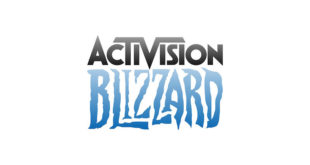“We have, like, a graveyard of skateboard prototypes here,” says Robomodo’s Patrick Dwyer in a half-joking sort of way.
Dwyer (below) was appointed lead designer for the Tony Hawk Ride project. That fixed him with the unenviable task of building the game itself and – because of course there are thirty-six hours in a day – a skateboard peripheral at the same time.
“At the very start of the project we were basically putting blank decks on the ground to get a feel for how this would work, while at the same time we were watching a lot of skate videos and tried to mimic their movement on the board to see how it would work out,” he says.
“We tried everything, from putting arcade buttons on the top of it (below), to using trackballs on it (under).”
“Essentially we were trying to see which things were fun to perform while standing up.”
Dwyer, speaking in the second part of Develop’s interview with the Robomodo team, said that many of the skateboard gravestones that dwell in Robomodo’s Chicago studio have thin rectangular holes cut out at the centre.
“We worked with a company based locally that design prototype products for Motorola. We spoke to them and they were able to carve holes into the bases of each board – actually I can’t even think of the number of iterations we had of that,” he says.
Why rectangular holes? We’re told that a widely-used motion controller was fitted in each, giving the Robomodo team a clearer picture of how the motions of the board translate to software.
Dwyer, having finished his very first peripheral project, says the process is not too dissimilar to designing software.
“In software development you need to prototype everything,” he says, “you need to see how the game works when the character is moving as fast as possible, or as slow as possible. With our board we really took the same approach, in that sense. We looked at everything, even the bottom curve on the board; how much it tilts, how much it lifts. All these small things are huge factors in our game.”
“We’re really aware of how crucial the board is to the critical success of the game,” says Dwyer, who was interviewed by Develop before the release of the title.
“We really were shooting for a game where the demographic is really wide; certainly wider than anything I’ve ever worked on in my career.“
One could argue that Robomodo has started out on the wrong foot. Having only formed last year, Robomodo saw the world’s biggest publisher entrust it with a key franchise, and ask the startup studio to build a game and board at the same time.
Despite the critical response to the game, Dwyer and the Robomodo team have – from the graves of numerous board prototypes – finished a design that’s made it to market. This from a group of people who work in numbers, artwork, sounds, coffee and code.
Now the studio is free to move on to its next project, which will likely involve the board peripheral. Hopefully thjis will give the young team a chance to show what Robomodo itself is truly made of.

 MCV/DEVELOP News, events, research and jobs from the games industry
MCV/DEVELOP News, events, research and jobs from the games industry



